home_news
Reinterpreting Historical Pots
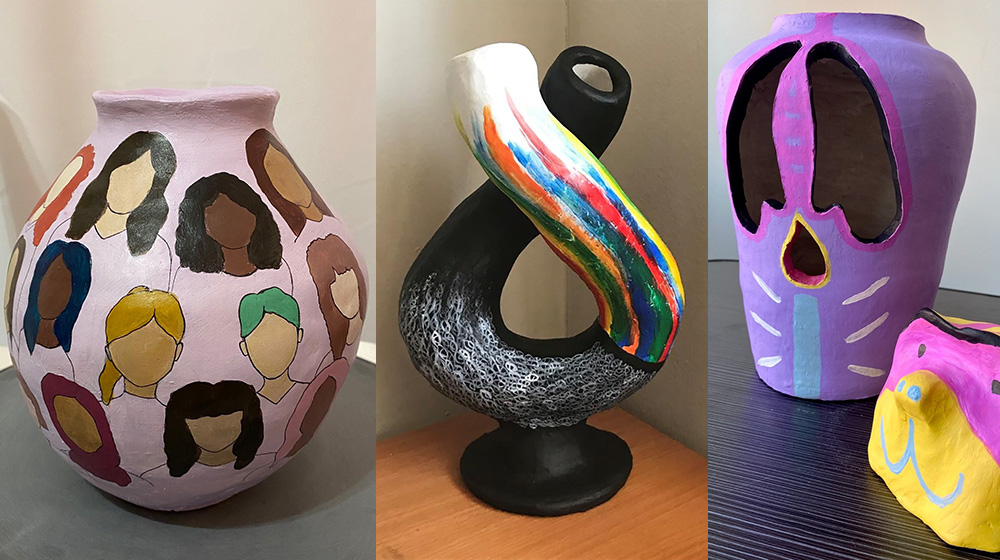
Historical ceramic pots represent a moment in time as well as the maker’s life. Shapes and surfaces often give us a glimpse into what individuals and communities found important. Whether it is their religious beliefs and practices, their politics, or simply things they enjoyed in their everyday lives.
Recently, Kate Biderbost (Advanced Lecturer of Fine Arts in Ceramics) engaged students in FNAR 120 (Beginning Hand Building) and FNAR 121 (Beginning Wheel Throwing) in relating their personal concerns and passions with a historical understanding of the social and cultural significance of historical ceramic pots. For this project, students created coil pots using air-dry clay and acrylics.
Carolyn Fraser (Sophomore; Psychology/Criminal Justice & Criminology)
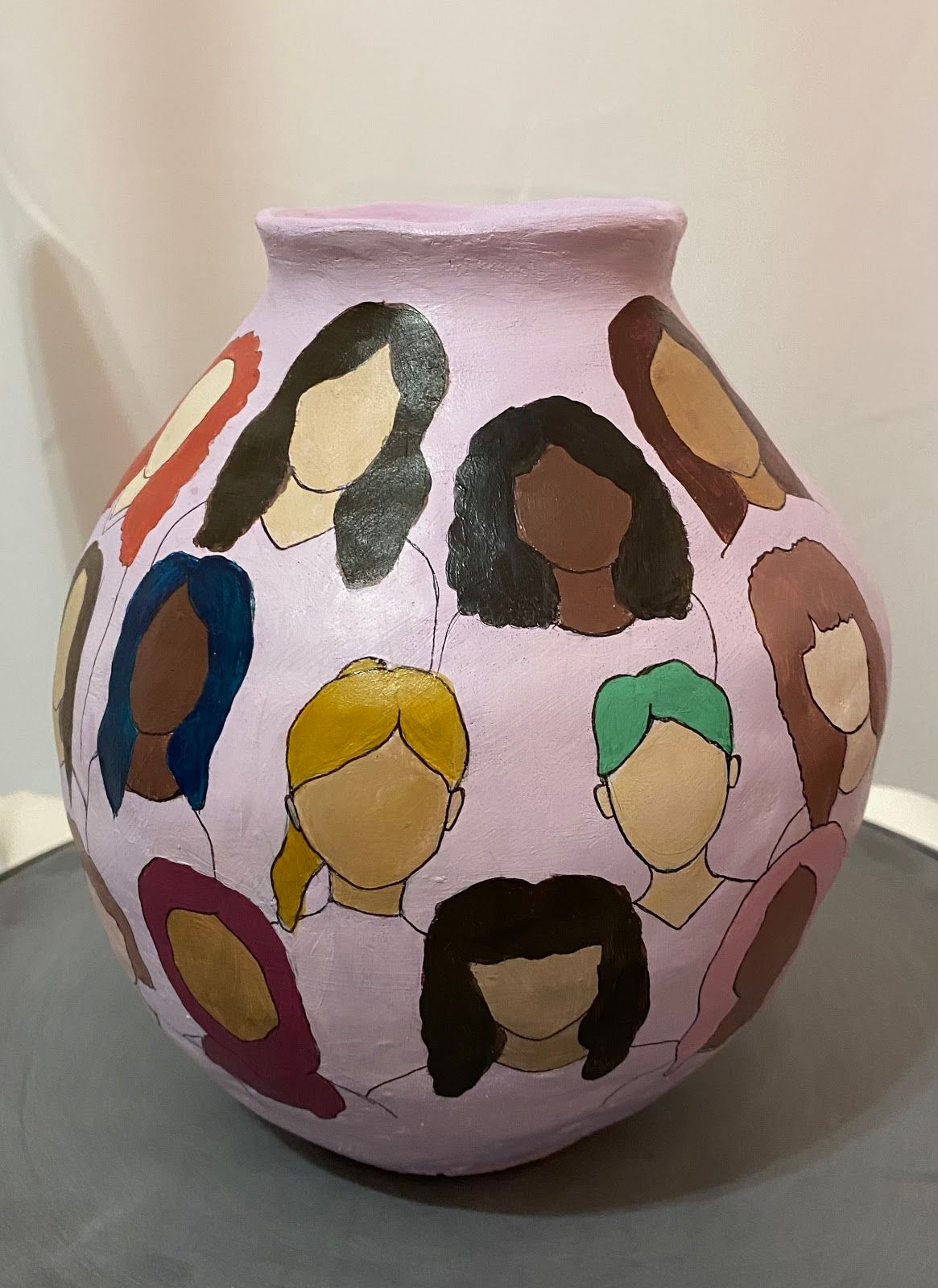
Statement:
I chose to center the artwork of my pot around feminism. The design I chose is to represent women coming together to share their voices and to support one another.
In recent years we have seen more women speaking out about issues they've faced that have for a long time been ignored. The feminist movement has given women a space to share their experiences. What I’ve realized as I’ve gotten older is that almost every girl has a story of a time where a man has mistreated, harassed or made them feel uncomfortable or unsafe in some way. With instances like these, the focus is often on what women should do to avoid these situations, rather than the expectation that the men who do these things should behave differently. By women talking about these experiences more it can make people more aware of how big an issue this is.
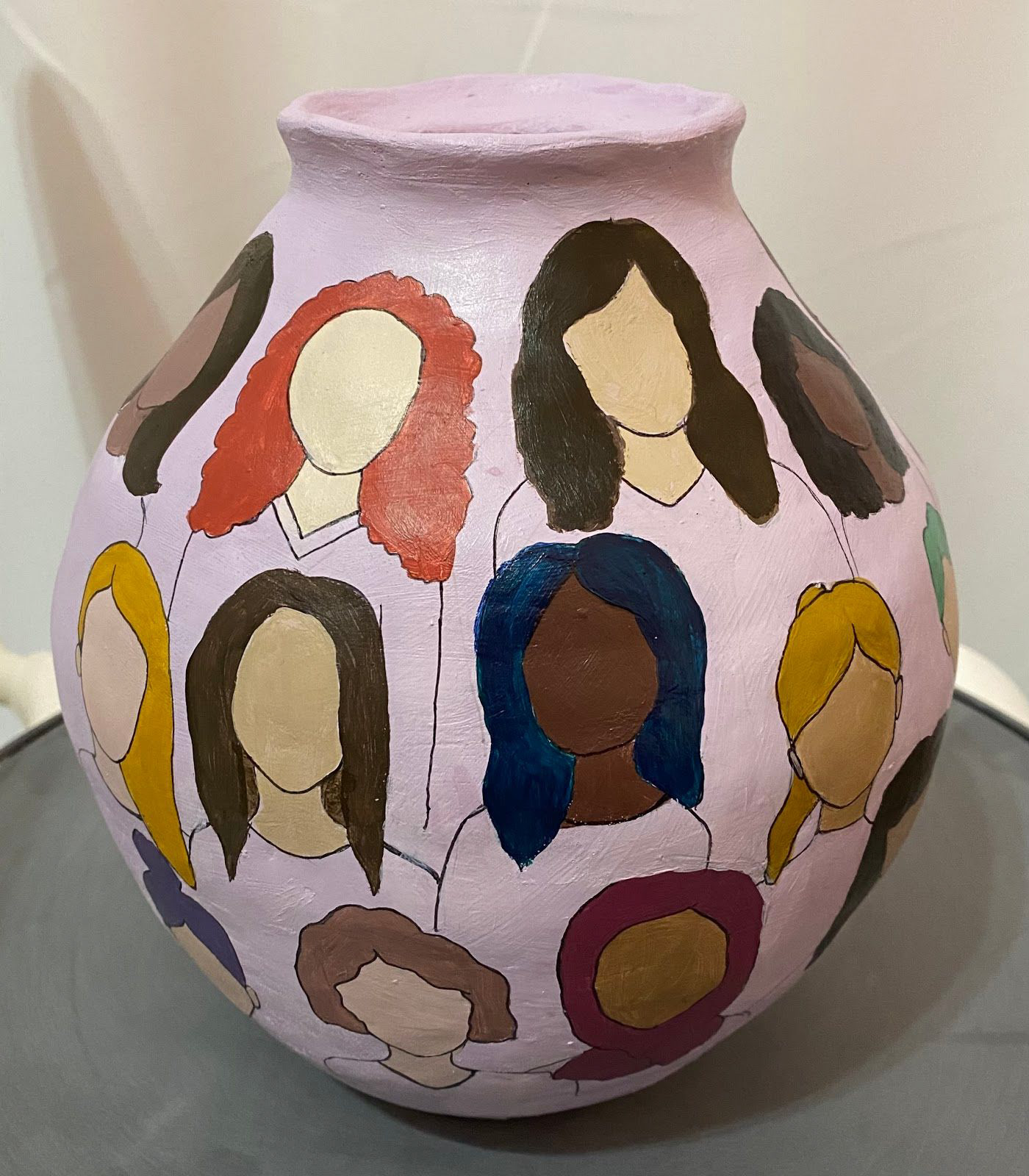
Social inequality between men and women is also seen in how kids are raised and the roles society expects men and women to hold. There are different expectations placed on girls and boys while they’re growing up. Girls are often taught in a way that sets them up to be in caretaker roles. Typically, mothers are expected to be the primary caretaker of children and to also do the majority of the housework, regardless of their job status. And as kids grow up, many girls end up conforming to this role and performing tasks for the men in the house, and less of these responsibilities are placed on boys. This was something I noticed growing up with brothers. The boys didn’t have as much responsibility to clean up after themselves, help with cooking or do other chores around the house. A lot of the time I don’t think parents always realize these differences are happening. Negative gender roles like this are enforced unconsciously because they are just the norm, which is why it is important to discuss them more.
These are some of the reasons why this topic is important to me and why I wanted to create something for this project inspired by feminism. A lot of good change can come from women coming together and talking about the many ways we face sexism in our own lives, which I wanted to represent through my pot.
Sara Hilali (Senior; Biology)
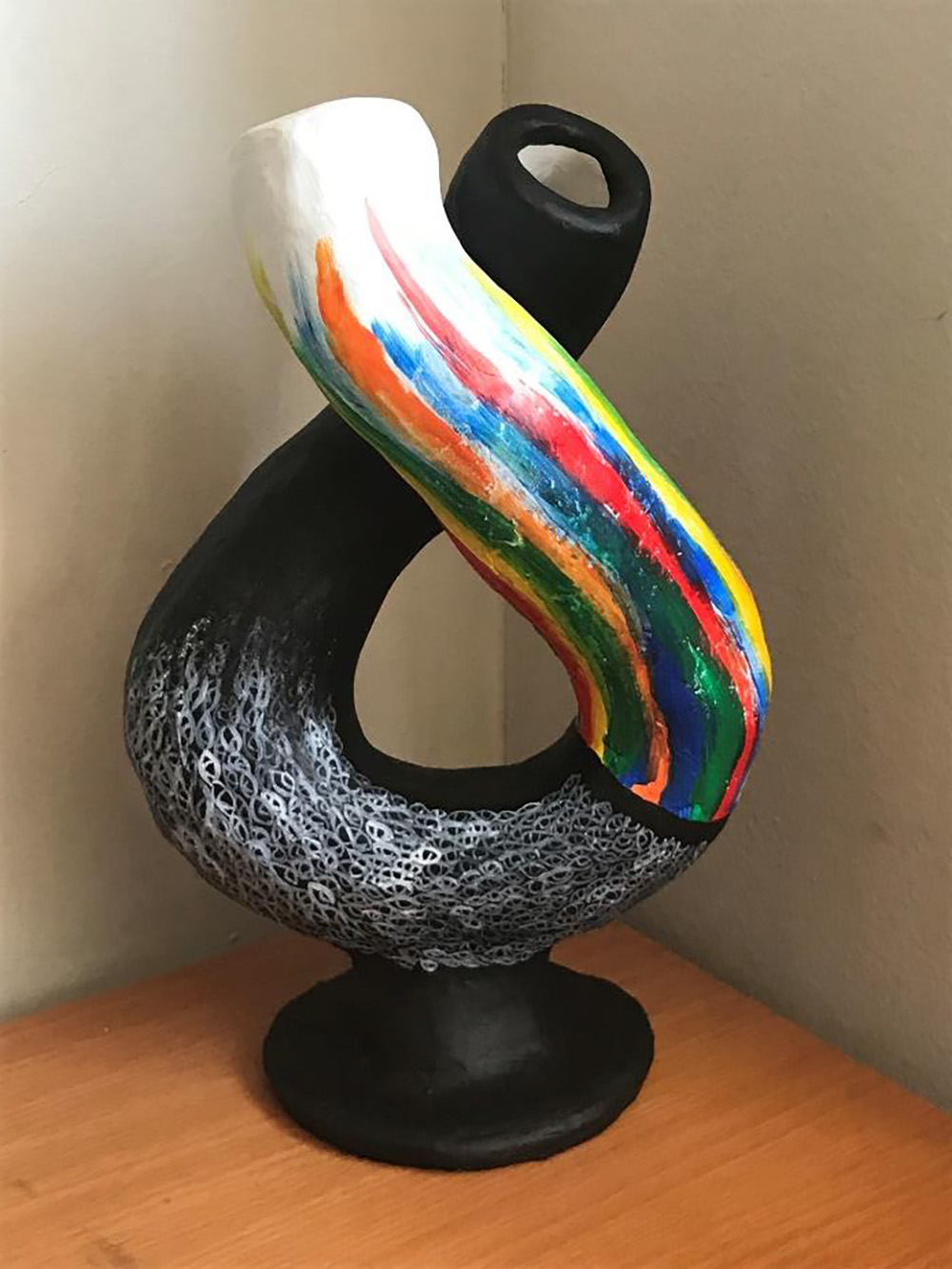
Statement:
For this project, I was heavily inspired by the unique shape of the Hittite wine decanter and I wanted my alterations of the shape and painting to convey the feelings of the isolation everyone has been dealing with given the conditions of the pandemic. I made it so the two sides of the rounded shape came very close to touching but they never made direct contact. I wanted this to convey the feeling of longing for community and connection to others in quarantine, since the pandemic continues to keep friends and families separated from each other. I wanted it to symbolize the effect that extended isolation has had on people at this point in history.
With the painting on this piece, I kept to the theme of isolation, but I also acknowledged the tone of what has happened from last year to now. I used black and white to represent the bad and the good events respectively. There is more black than white because most people would say the past year was more bad than good and with good reason. For the white “good” side I added bright colors to represent the hope we have as a community moving forward from the current times as the COVID vaccine is distributed and the world slowly becomes safer again. On the black “bad” side, I put a pattern of eyes to represent all the people who have been struggling with loneliness, isolation and a lack of in-person connections because of the pandemic. I was also hoping the eye pattern would make it more similar to the original historical pottery by putting a white pattern on black.
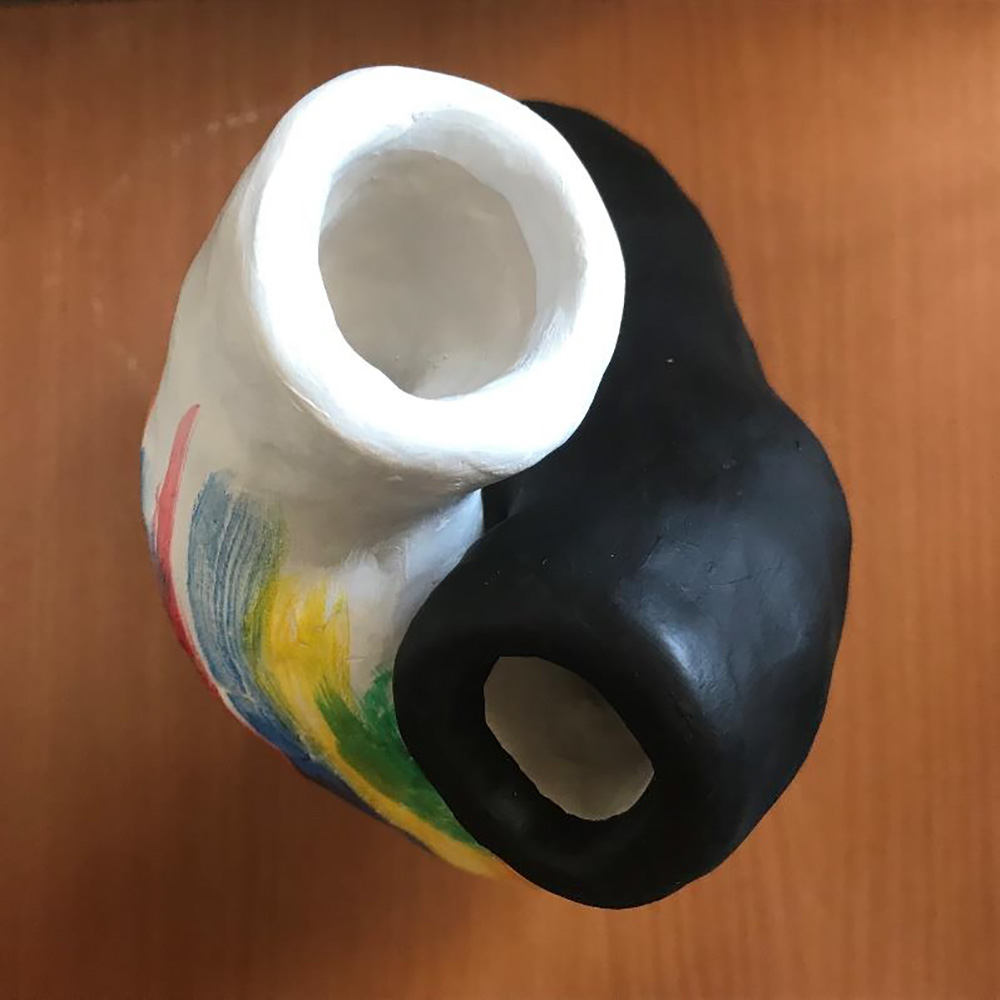
A lot of the symbolism in my pot isn’t very literal and it didn’t turn out exactly how I originally planned, but I can say I really enjoyed making this piece and I’m very happy with what I achieved in making such a challenging shape.
Dahnbee Kim (Junior; Nursing)
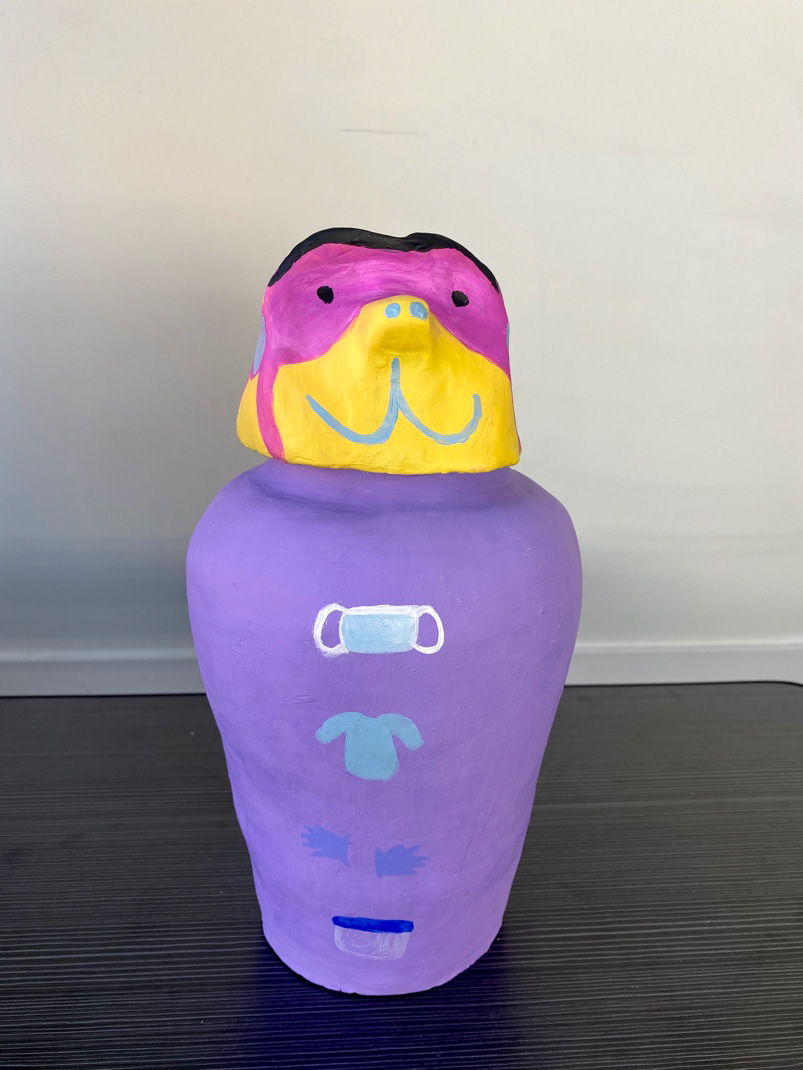
Statement:
At the start of quarantine, I jumped right back into work to help out as a nursing assistant for COVID-19 patients. The effects of seeing the deterioration of patients, especially COVID-19 patients, would keep me awake at night in the beginning. The eerily dark rooms were often lit up by one light. A compromise between the patient and the nurse so that the patient could try to sleep a little while the nurse would be able to regularly check their vitals on the little monitor. The phrases I often heard from patients were, “I can’t breathe”, even as their oxygen was on one of the higher settings. But perhaps the most unsettling of them all was, “Am I going to die?”.
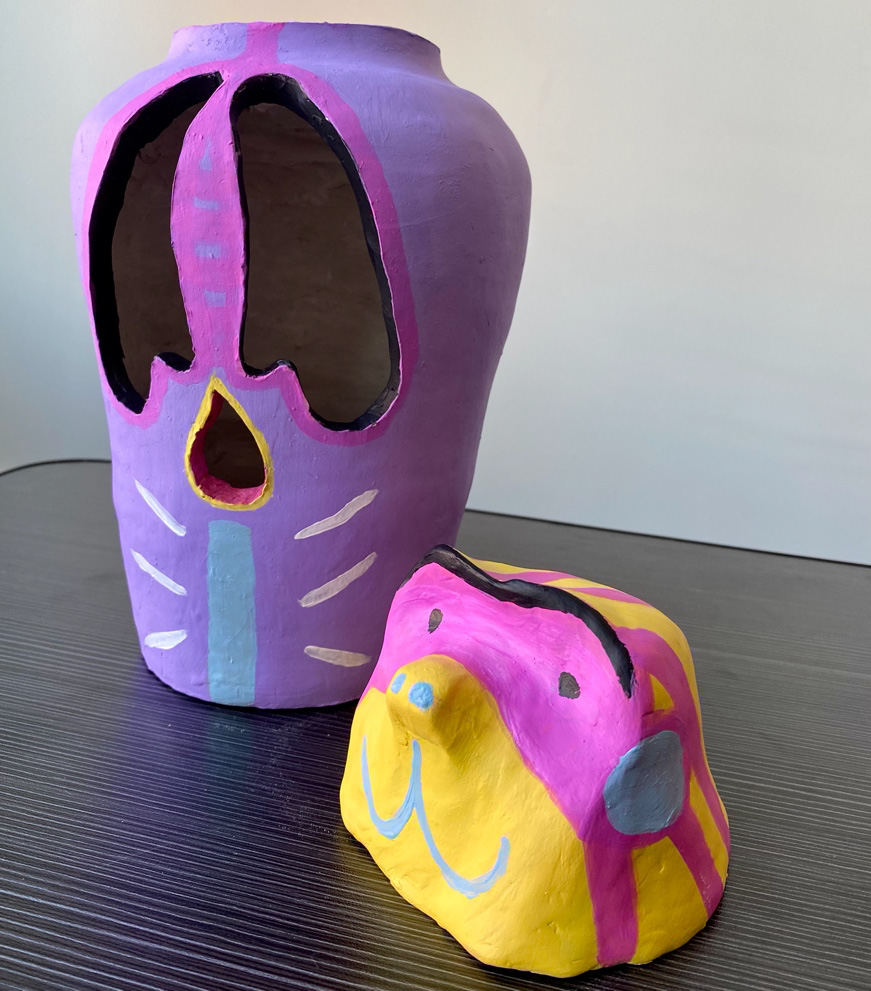
For my historical reinterpretation, I chose to recreate an Egyptian canopic jar with Hapy, a monkey, and one of the sons of Horus that protected the preserved lungs for the afterlife of those who passed. I wanted to honor all of the patients I saw pass and deteriorate in those dark rooms, alone, and unable to breathe through the use of the top of the jar with Hapy the one who protects the lungs. I also carved out lungs in the back of the jar so that there was airflow and a chance to finally “breathe” even if one were to pass. I also carved out a little candle to provide light after seeing all of the patients in sometimes windowless dark rooms. Bright colors were used to focus on the good in life as well as to celebrate life. Somehow, unintentionally the carving also started to look like a skull which I thought was interesting. On the front, I painted PPE commonly used when caring for COVID patients to symbolize the things we can do to protect others, as well as honor the nurses I saw protect and advocate for these patients. This is because there usually are hieroglyphics to protect the organ into the afterlife. I thought the project was pretty therapeutic and encouraging to keep seeing the good parts of life.
FNAR 120 Ceramics: Handbuilding and FNAR 121 Ceramics: Wheelthrowing are offered every Fall and Spring and count toward fulfilling the Artistic Knowledge & Experience Core Knowledge Area. For more information on these and other Fine Arts courses, please visit our Course Catalog.

